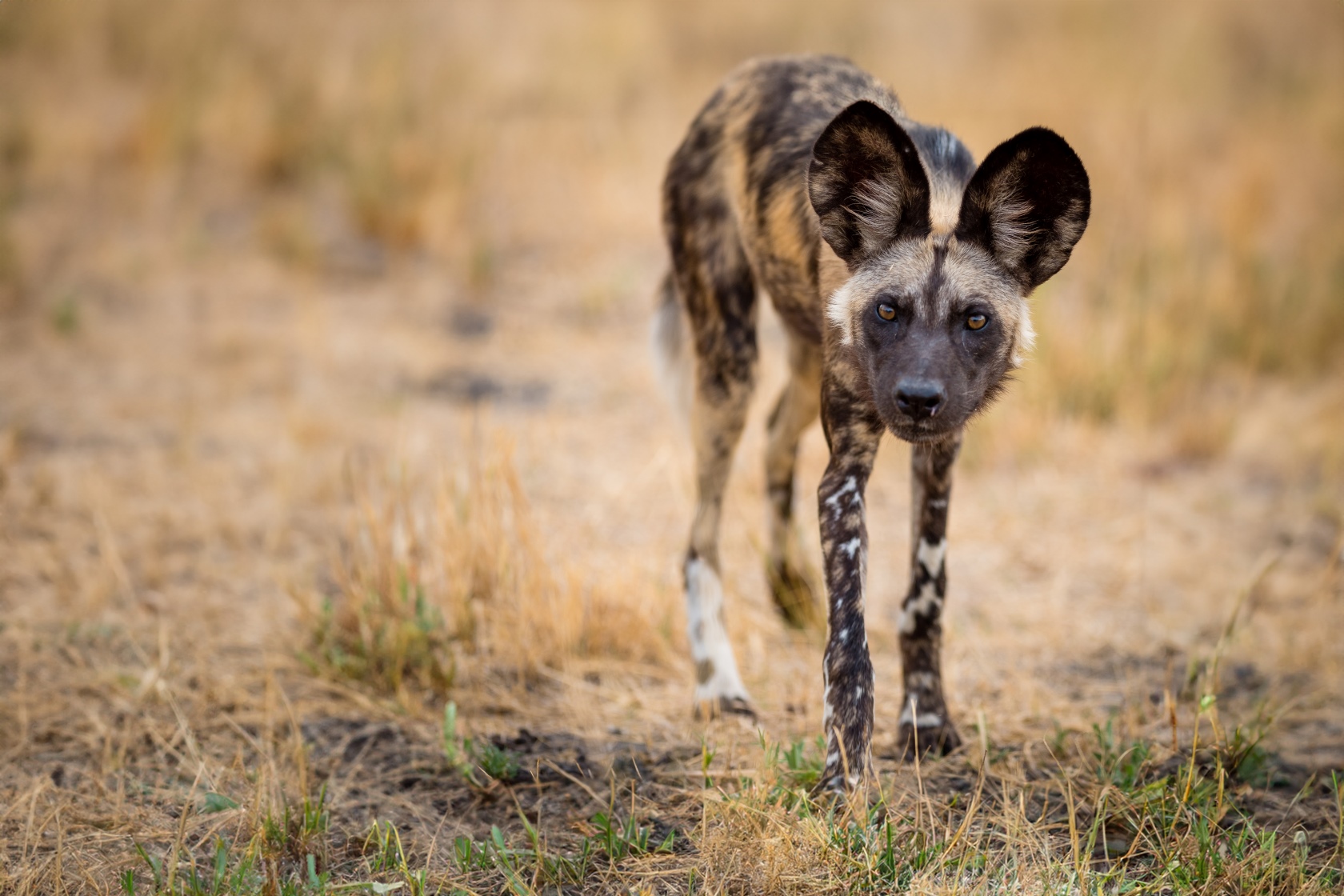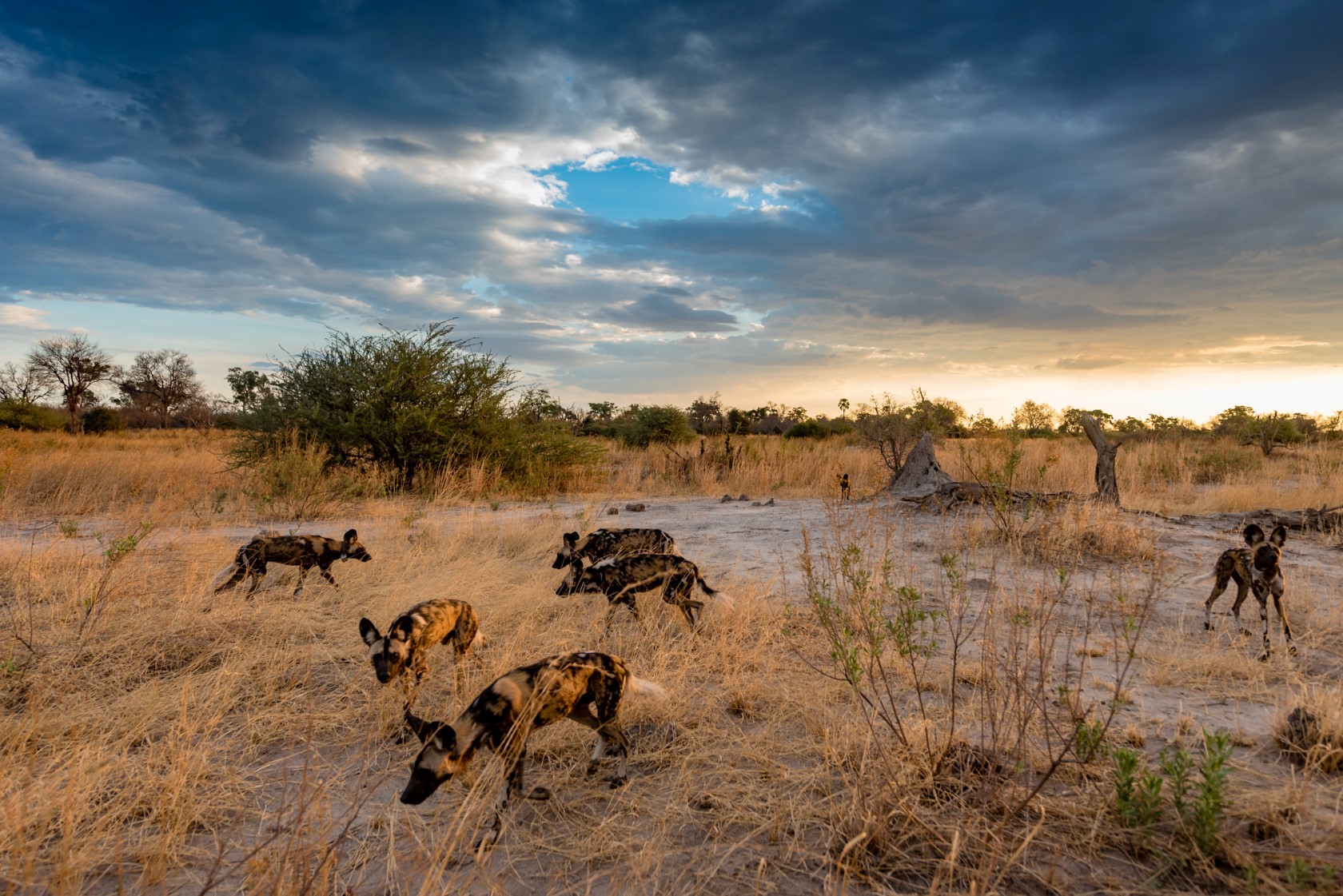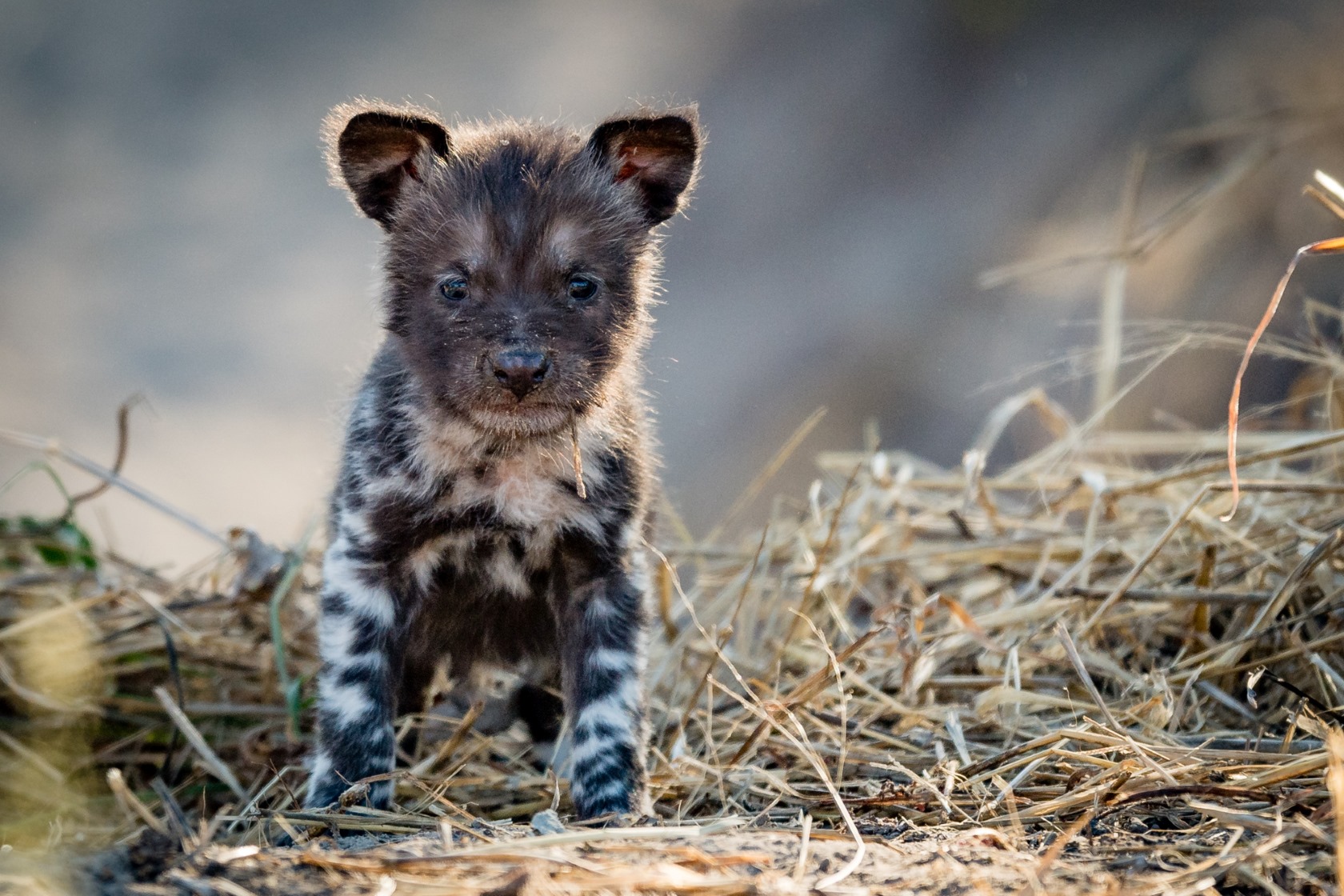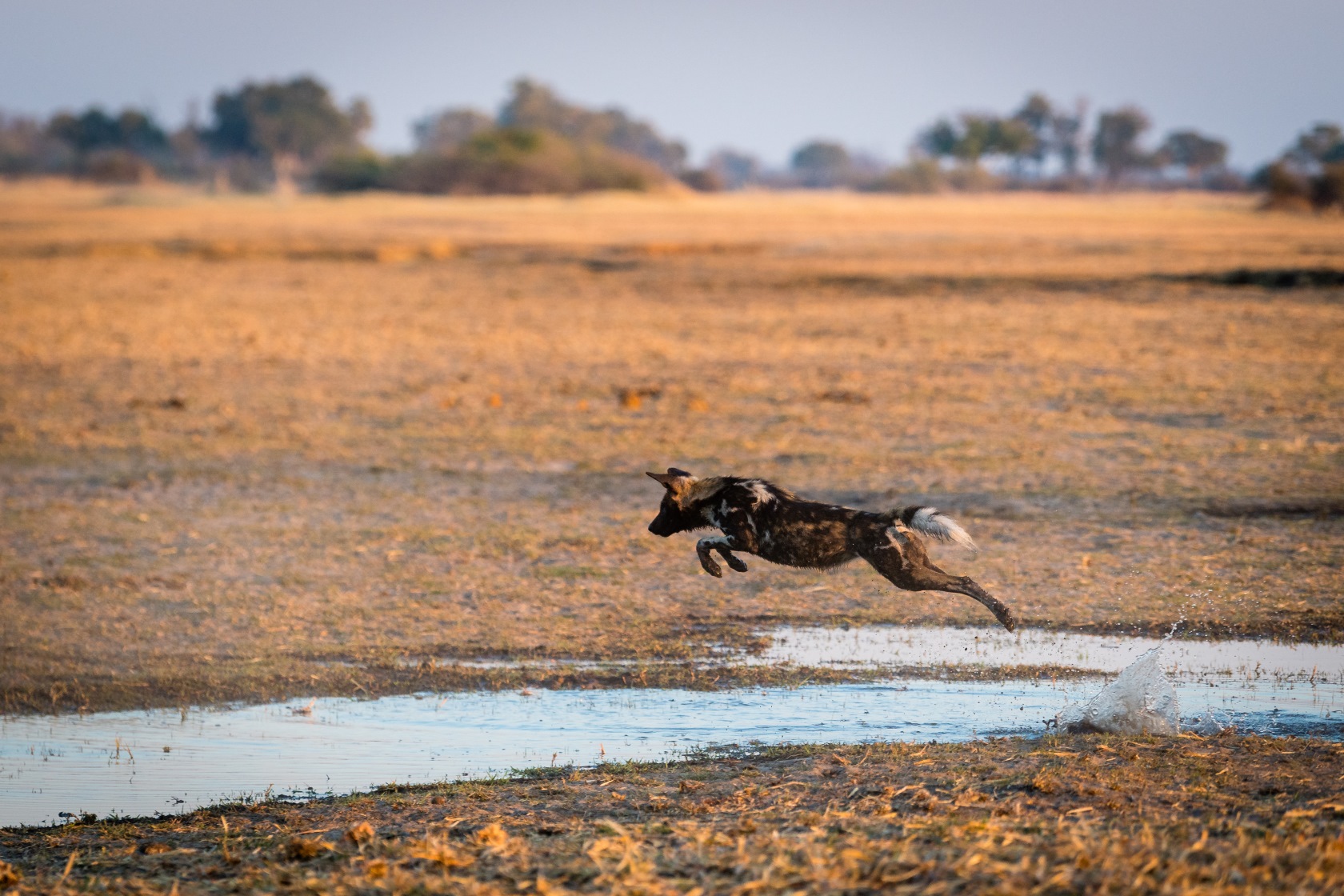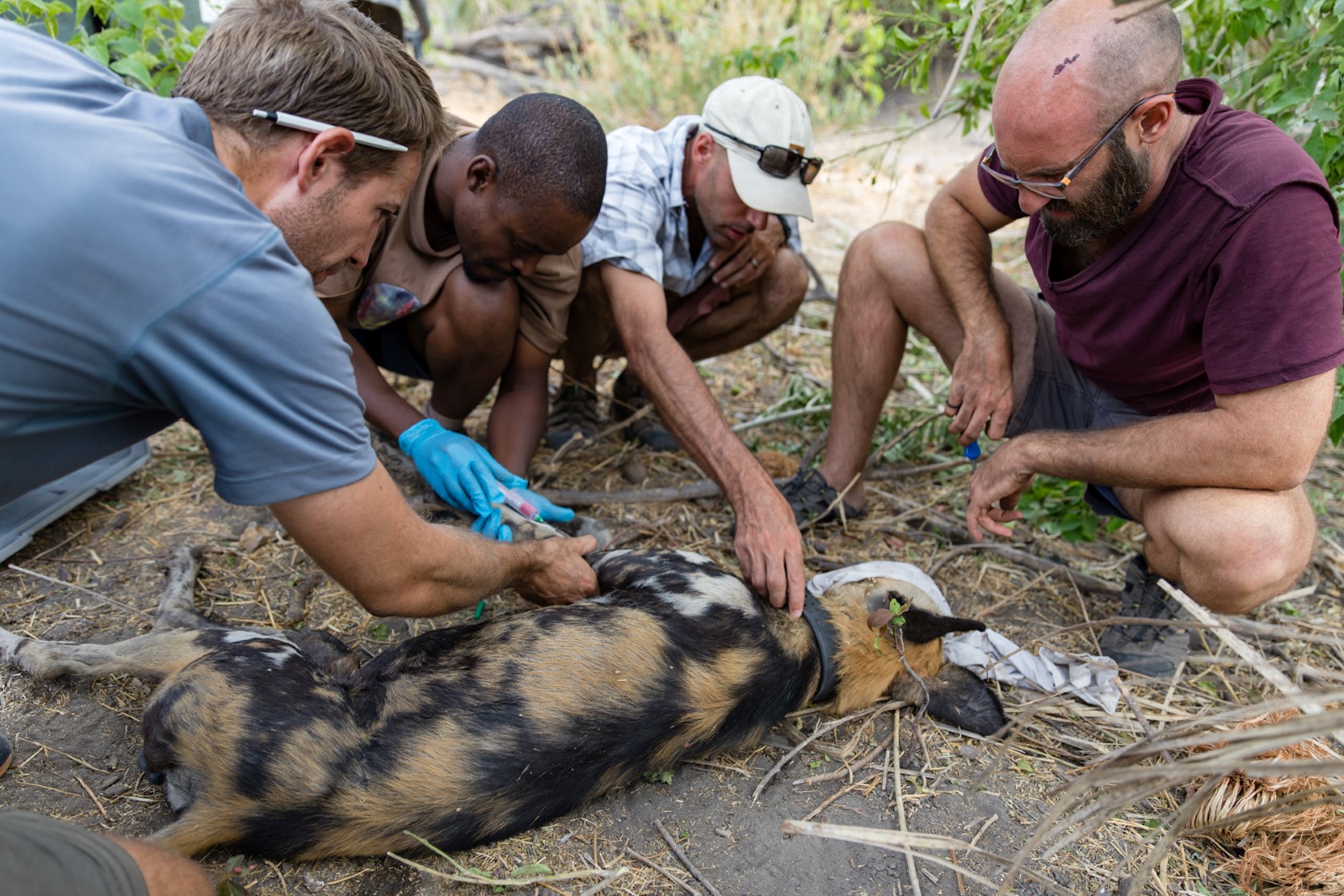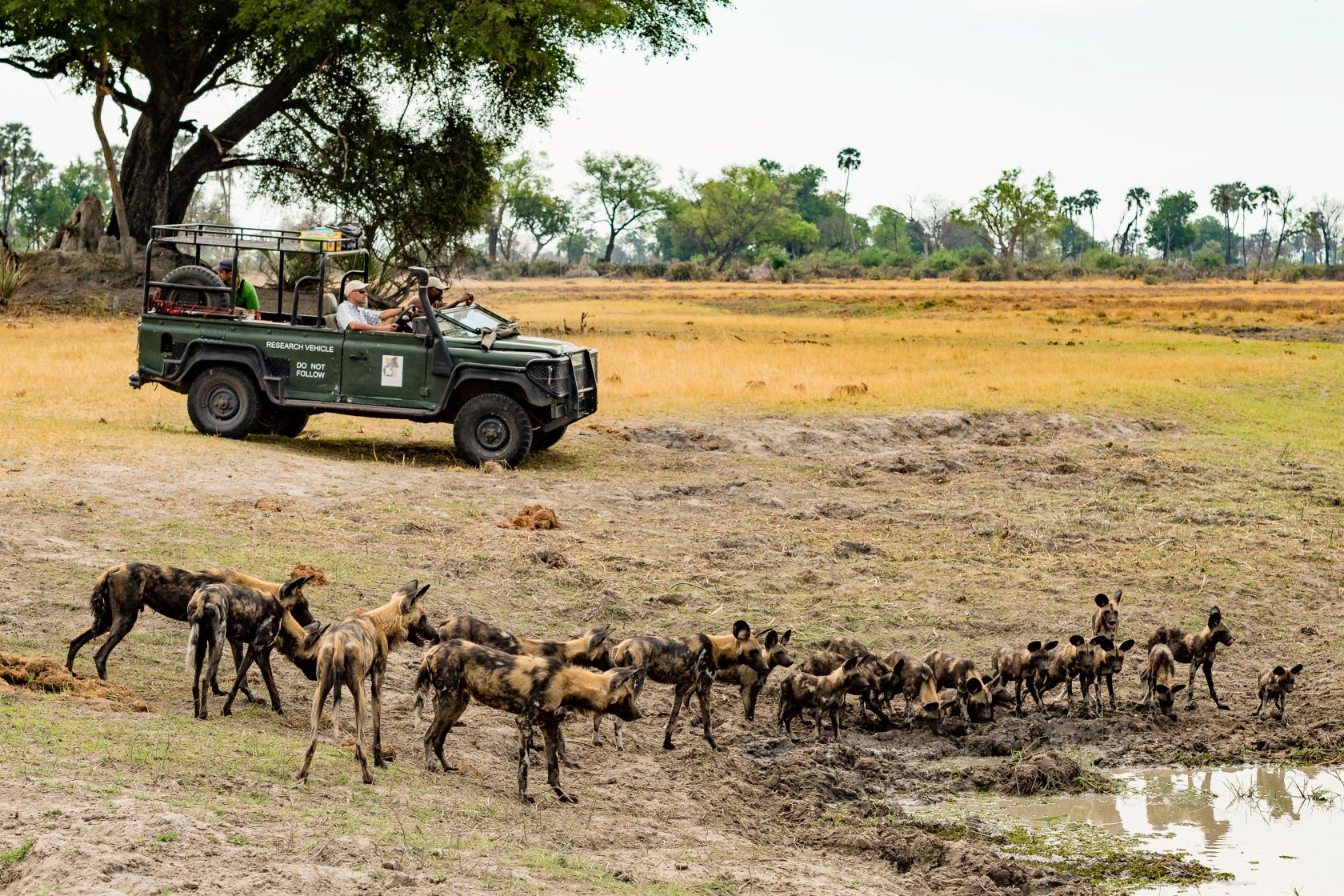Botswana Predator Conservation
African Wild Dog
Our research focuses on the African wild dog (Lycaon pictus), Africa's most critically endangered large carnivore. With fewer than 6,000 individuals remaining in the wild across few fragmented populations, our study aims to investigate two crucial aspects of their population persistence: demographic processes and dispersal patterns.
In partnership with Botswana Predator Conservation (BPC), we integrate decades of comprehensive life-history data with modern satellite tracking techniques and camera trap surveys. This long-term demographic data provides a detailed account of population dynamics, encompassing birth and death rates, and group compositions. By overlaying this with real-time data from satellite collars, we track the movement of resident packs as well as sub-adult wild dogs as they disperse from their natal packs. This approach allows us to map their dispersal routes, understand habitat preferences during the transfer phase, and evaluate the success rates of establishing new territories. By analysing data on key prey and competitor species captured in camera traps, we assess the impacts of species interactions on survival and reproductive success. This allows us to identify critical factors influencing the expansion or decline of African wild dog populations.
The combination of long-term demographic data with contemporary information on dispersal and community composition enables us to construct a more detailed picture of the species' population ecology. This unified approach is pivotal for understanding the interplay between local population dynamics and broader landscape-level movements and colonisation patterns. Our research is instrumental in predicting the long-term viability of African wild dog populations under varying environmental and anthropogenic pressures.
Ultimately, this project aims to enhance conservation strategies for African wild dogs by providing a better understanding of their demographic trends and dispersal patterns. This knowledge is vital for formulating effective conservation policies and management plans, both at the national level and across transboundary conservation areas in Africa.
This project has been developed in collaboration and coordination with Botswana Predator Conservation, the initiator and operator of the longest running research project on African wild dogs, and the Department of Wildlife and National Parks of Botswana.
Publications
- An AI-based platform to investigate African large carnivore dispersal and demography across broad landscapes: A case study and future directions using African wild dogs. African Journal of Ecology (2023) DOI: 10.1111/aje.13227
- Higher mortality is not a universal cost of dispersal: a case study in African wild dogs. American Naturalist (2023) DOI: 10.1086/726220
- A three-step approach for assessing landscape connectivity via simulated dispersal: African wild dog case study. Landscape Ecology (2023) DOI: 10.1007/s10980-023-01602-4
- Bound within boundaries: Do protected areas cover movement corridors of their most mobile, protected species? Journal of Applied Ecology (2021) DOI: 10.1111/1365-2664.13868
- When to stay and when to leave? Proximate causes of dispersal in an endangered social carnivore. Journal of Animal Ecology (2020) DOI: 10.1111/1365-2656.13300
- African wild dog dispersal and implications for management. Journal of Wildlife Management (2020) DOI: 10.1002/jwmg.21841
